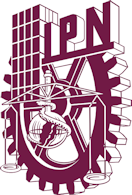Por favor, use este identificador para citar o enlazar este ítem:
http://repositoriodigital.ipn.mx/handle/123456789/11107Registro completo de metadatos
| Campo DC | Valor | Lengua/Idioma |
|---|---|---|
| dc.creator | Molina, J | - |
| dc.date | 2012-03-27T20:15:39Z | - |
| dc.date | 2012-03-27T20:15:39Z | - |
| dc.date | 2012-03-27 | - |
| dc.date.accessioned | 2013-01-16T12:38:34Z | - |
| dc.date.available | 2013-01-16T12:38:34Z | - |
| dc.date.issued | 2013-01-16 | - |
| dc.identifier | 1665-2436 | - |
| dc.identifier | http://hdl.handle.net/123456789/615 | - |
| dc.identifier.uri | http://www.repositoriodigital.ipn.mx/handle/123456789/11107 | - |
| dc.description | Referring to the theory of intuitions and intuitive models of Fischbein (1987), we focus our attention in identifying those intuitive models that some students might have with respect to linear transformations in a geometrical context. In order to achieve our goal we designed an interview; after applying and analyzing it we found that all the students that we interviewed were thinking about the linear transformation in terms of prototypical examples or models. Students seemed to have a universe of linear transformations that consisted in expansions, contractions, reflections, rotations and combinations of these. The nuances of these models were changing depending on the student and the properties that they were assigning to their representations. | - |
| dc.language | es | - |
| dc.subject | Linear transformations | - |
| dc.subject | linear algebra | - |
| dc.subject | intuitive models | - |
| dc.subject | intuition | - |
| dc.title | Concepciones de la transformación lineal en contexto geométrico | - |
| dc.type | Article | - |
| Aparece en las colecciones: | Doctorado | |
Ficheros en este ítem:
| Fichero | Descripción | Tamaño | Formato | |
|---|---|---|---|---|
| 4° POA 2007 ART Gabriel M (1) Concepciones de.pdf | 1.07 MB | Adobe PDF | Visualizar/Abrir |
Los ítems de DSpace están protegidos por copyright, con todos los derechos reservados, a menos que se indique lo contrario.

